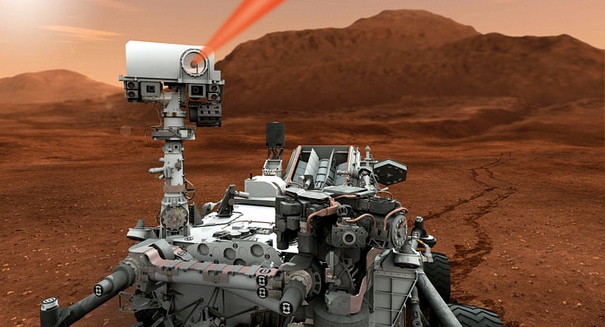
Curiosity will be able to determine the best routes to travel without human guidance.
Exciting developments are happening for NASA and the Mars rover Curiosity, which used autonomous – or self-governed – navigation for the first time last week. According to a news post on NASA’s website, the new feature will be of pivotal importance to the rover’s exploration of Mars, as it will allow the craft to determine the safest routes to travel without human guidance.
With autonomous navigation, the Curiosity rover can utilize and analyze images collected from the Martian surface in order to choose the safest driving path possible. This capability will help prevent crashes or falls that might render the rover undriveable. In addition, smart autonomous navigation allows for safer driving than would be possible if the rover were remote-controlled from NASA headquarters on Earth, as it allows the rover to make quick and near-instantaneous decisions. Because of the far-flung nature of Mars and the time it takes for video and remote control signals to get back and forth between the rover and Earth, human-controlled navigation is not really a viable option for Mars exploration.
Thanks to this impressive new feature, the Curiosity will be able to better explore Mount Sharp, a geological formation that may give clues about Mars environmental shifts. The rover uses stereo pairs of images to analyze terrain and determine rough patches or hazards. The computer then considers such dangerous features of the land and generates a safer path that circumvents them.
Last Tuesday, the Curiosity autonomous navigation system got its first major test, navigating a patch of terrain that human drivers at NASA could not confirm to be safe. The test was a risk for NASA, which could have easily lost use of the rover had the autonomous navigation systems failed. Luckily, Curiosity managed a successful navigation across the 33-foot patch of land, giving NASA a big breakthrough and opening doors for the potential of the rover.
Curiosity has been on its mission for over a year now. Last August, the rover landed on Mars inside Gale Crater, and has spent the year since on a long trek toward the ultimate destination of Mount Sharp. Along the way, Curiosity has explored different portions of the Martian surface, including the Glenelg area, where NASA located evidence of an ancient wet environment that may have once supported microbial life.
As the rover continues its journey, it will hit a number of waypoints that NASA analysts have picked out as “geographically interesting.”
Leave a Reply